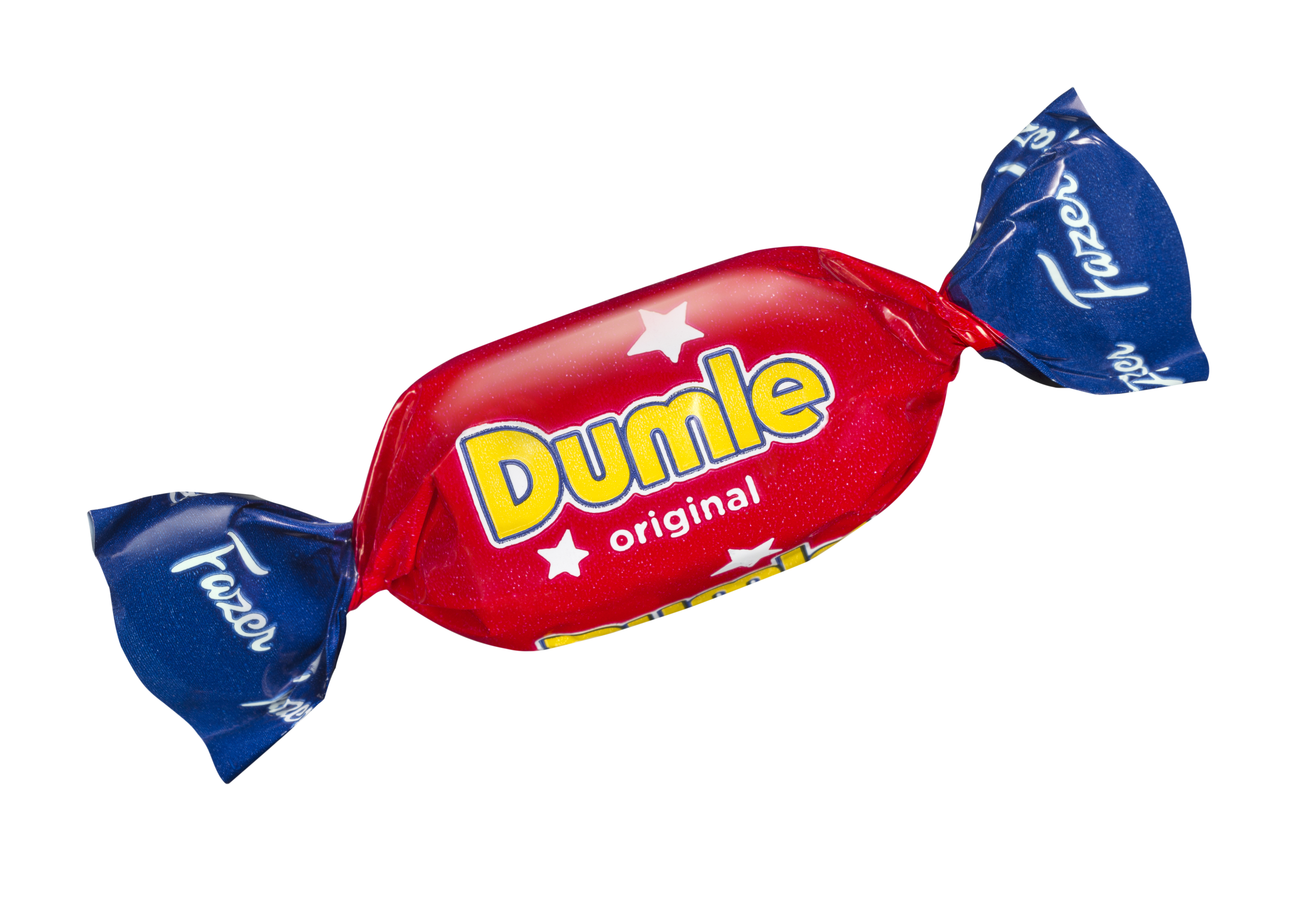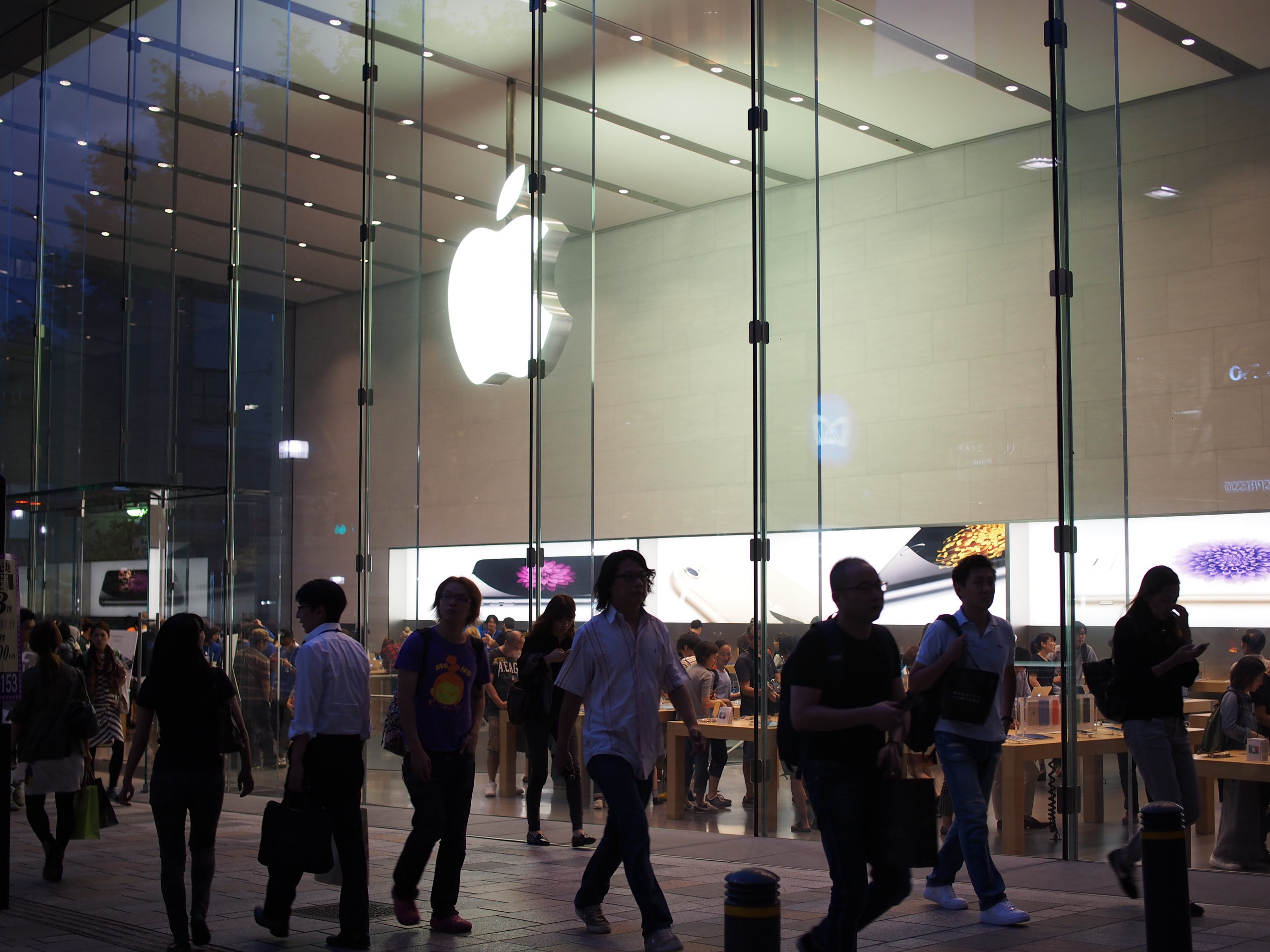|
Dumle
Dumle is a brand of chocolate-covered toffees marketed and manufactured by Fazer. The toffees were first manufactured in 1945 by Mazetti, a chocolate and confectionery producer in Malmö, Sweden. The original sweet consisted of a hard toffee lollipop coated in chocolate, but was not branded Dumle until 1960, possibly as a reference to children's television series , one of the first broadcast on Swedish television. The manufacturer was acquired by Fazer in 1975, and in 1987 Fazer released a new product with a softer toffee covered in chocolate and packaged in a candy wrapper, which is now named ''Dumle original''. They are manufactured in , Vantaa, Finland. The brand now contains a range of chocolate-covered caramels and toffees, including a range of chocolates and ice creams. A number of variations and limited editions have been produced, including apple, salty liquorice, mint, gingerbread, mango-orange, cranberries, banana, lime and chocolate-flavoured soft toffees, often with ... [...More Info...] [...Related Items...] OR: [Wikipedia] [Google] [Baidu] |
Fazer
Fazer (, ) is one of the largest corporations in the Finland, Finnish food industry. The company was founded by Karl Fazer in 1891, as a "French-Russian café" in central Helsinki. Today, it employs over 6,000 people across Finland, Sweden, Latvia, Lithuania, Estonia, Denmark, Norway and Poland. Its products are exported to more than 40 countries. History Fazer acquired Swedish confectionery company Mazetti in 1975, Mazetti started several product lines which are now iconic to Fazer, including Dumle and Tutti Frutti. Fazer formed a partnership with United Biscuits in its Fazer Keksit (which made biscuits) and UB owned 70 per cent of it until 2000. Fazer has historically acquired several other companies, including the Finnish Chymos and the Danish Perelly. The confectionery line was merged with its Sweden, Swedish competitor Cloetta in 2000, to become Cloetta Fazer, though the merger lasted only until 2008 before the two brands were separated back to independent companies. La ... [...More Info...] [...Related Items...] OR: [Wikipedia] [Google] [Baidu] |
Mazetti
Mazetti Aktiebolag, AB was a Swedish manufacturer of cacao, chocolate and other candies founded and based in Malmö, Sweden. It was acquired by the Finnish Fazer company in 1975. History Mazetti was founded in 1888 by Danish confectioner Emil Nissen, originally named ''Malmö Choklad och Konfektfabriks AB''. A factory was built on Bergsgatan in central Malmö, with the work led by Christian Lauritz Müller. The Mazetti building Manufacturing in Malmö ended in 1992, but the factory building remains and today houses the Mazetti Culture House () which opened on February 3 2006. Products Mazetti started several product lines which continue as Fazer products today * The Ögon brand is used for cacao and baking chocolate by Fazer * Dumle * Tutti Frutti References {{Reflist Swedish companies established in 1888 Confectionery companies of Sweden 1975 disestablishments in Sweden Companies disestablished in 1975 Swedish companies disestablished in the 1970s Companies based in ... [...More Info...] [...Related Items...] OR: [Wikipedia] [Google] [Baidu] |
Vantaa
Vantaa (; , ) is a city in Finland. It is located to the north of the capital, Helsinki, in southern Uusimaa. The population of Vantaa is approximately . It is the most populous municipality in Finland. Vantaa is part of the Helsinki Metropolitan Area, which has approximately million inhabitants. The administrative centre of Vantaa is located in the Tikkurila district. Vantaa lies in Southern Finland and shares borders with Helsinki, the Finnish capital, to the south, Espoo to the southwest, Nurmijärvi to the northwest, Kerava and Tuusula to the north, and Sipoo to the east. The city covers a total area of , of which is water. Vantaa's significant attractions include Vantaa River (''Vantaanjoki''), which runs through the city before flowing into the Gulf of Finland. The Helsinki Airport, situated in Vantaa, serves as the largest airport in Finland and the primary airline hub for the Helsinki metropolitan area. Companies headquartered in Vantaa comprise Finnair, F ... [...More Info...] [...Related Items...] OR: [Wikipedia] [Google] [Baidu] |
Finnish Confectionery
Finnish may refer to: * Something or someone from, or related to Finland * Culture of Finland * Finnish people or Finns, the primary ethnic group in Finland * Finnish language, the national language of the Finnish people * Finnish cuisine See also * Finish (other) * Finland (other) * Suomi (other) Suomi means ''Finland'' in Finnish. Suomi may also refer to: *Finnish language Finnish (endonym: or ) is a Finnic languages, Finnic language of the Uralic languages, Uralic language family, spoken by the majority of the population in Finla ... * {{disambiguation Language and nationality disambiguation pages ... [...More Info...] [...Related Items...] OR: [Wikipedia] [Google] [Baidu] |
Brand Name Confectionery
A brand is a name, term, design, symbol or any other feature that distinguishes one seller's goods or service from those of other sellers. Brands are used in business, marketing, and advertising for recognition and, importantly, to create and store value as brand equity for the object identified, to the benefit of the brand's customers, its owners and shareholders. Brand names are sometimes distinguished from Generic brand, generic or store brands. The practice of branding—in the original literal sense of marking by burning—is thought to have begun with the ancient Egyptians, who are known to have engaged in livestock branding and branded slaves as early as 2,700 BCE. Branding was used to differentiate one person's cattle from another's by means of a distinctive symbol burned into the animal's skin with a hot branding iron. If a person stole any of the cattle, anyone else who saw the symbol could deduce the actual owner. The term has been extended to mean a strategic person ... [...More Info...] [...Related Items...] OR: [Wikipedia] [Google] [Baidu] |
Toffee
Toffee is an English confection made by caramelizing sugar or molasses (creating inverted sugar) along with butter, and occasionally flour. The mixture is heated until its temperature reaches the hard crack stage of . While being prepared, toffee is sometimes mixed with nuts or raisins. Variants and applications A popular variant in the United States is ''English toffee'', which is a very buttery toffee often made with almonds. It is available in both chewy and hard versions. Heath bars are a brand of confection made with an English toffee core. Although named ''English toffee,'' it bears little resemblance to the wide range of confectionery known as toffee currently available in the United Kingdom. However, one can still find this product in the UK under the name "butter crunch". Etymology The origins of the word are unknown. Food writer Harold McGee claims it to be "from the Creole for a mixture of sugar and molasses", but which creole language is not specified. ... [...More Info...] [...Related Items...] OR: [Wikipedia] [Google] [Baidu] |
Products Introduced In 1987
Product may refer to: Business * Product (business), an item that can be offered to a market to satisfy the desire or need of a customer. * Product (project management), a deliverable or set of deliverables that contribute to a business solution Mathematics * Product (mathematics) Algebra * Direct product Set theory * Cartesian product of sets Group theory * Direct product of groups * Semidirect product * Product of group subsets * Wreath product * Free product * Zappa–Szép product (or knit product), a generalization of the direct and semidirect products Ring theory * Product of rings * Ideal operations, for product of ideals Linear algebra * Scalar multiplication * Matrix multiplication * Inner product, on an inner product space * Exterior product or wedge product * Multiplication of vectors: ** Dot product ** Cross product ** Seven-dimensional cross product ** Triple product, in vector calculus * Tensor product Topology * Product topology Algebraic topology * Cap prod ... [...More Info...] [...Related Items...] OR: [Wikipedia] [Google] [Baidu] |
Mango
A mango is an edible stone fruit produced by the tropical tree '' Mangifera indica''. It originated from the region between northwestern Myanmar, Bangladesh, and northeastern India. ''M. indica'' has been cultivated in South and Southeast Asia since ancient times resulting in two types of modern mango cultivars: the "Indian type" and the "Southeast Asian type". Other species in the genus '' Mangifera'' also produce edible fruits that are also called "mangoes", the majority of which are found in the Malesian ecoregion. Worldwide, there are several hundred cultivars of mango. Depending on the cultivar, mango fruit varies in size, shape, sweetness, skin color, and flesh color, which may be pale yellow, gold, green, or orange. Mango is the national fruit of India, Pakistan and the Philippines, while the mango tree is the national tree of Bangladesh. Etymology The English word ''mango'' (plural ''mangoes'' or ''mangos'') originated in the 16th century from the Portuguese ... [...More Info...] [...Related Items...] OR: [Wikipedia] [Google] [Baidu] |
Gingerbread
Gingerbread refers to a broad category of baked goods, typically flavored with ginger root, ginger, cloves, nutmeg, and cinnamon and sweetened with honey, sugar, or molasses. Gingerbread foods vary, ranging from a moist loaf cake to forms nearly as crisp as a ginger snap. Etymology Originally, the term ''gingerbread'' (from Latin via Old French ') referred to preserved ginger. It then referred to a confection made with honey and spices. ''Gingerbread'' is often used to translate the French term ''pain d'épices'' () or the German and Polish terms ''Pfefferkuchen'' and ''Pryanik, Piernik'' respectively ( because it used to contain pepper) or ''Lebkuchen'' (of unclear etymology; either Latin ', meaning "sacrifice" or "sacrificial bread," or German ' for loaf or German for life, '). Pepper is also referred to in regional names like Norwegian ' or Czech ' (originally ''peprník''). The meaning of ''gingerbread'' has evolved over time. For centuries the term referred to a traditiona ... [...More Info...] [...Related Items...] OR: [Wikipedia] [Google] [Baidu] |
Salty Liquorice
Salty liquorice, also known as salmiak liquorice, salmiac liquorice or (in Finland) , is a variety of liquorice (confectionery), liquorice flavoured with salmiak salt (sal ammoniac; ammonium chloride#Food, ammonium chloride), and is a common confection found in the Nordic countries, Benelux, and northern Germany. Salmiak salt gives salty liquorice an astringent, salty taste, akin to that of tannins—a characteristic of red wines, which adds bitterness and astringency to the flavour. Consuming salmiak liquorice can stimulate either a savoury or non-savoury palate and response. Anise oil can also be an additional main ingredient in salty liquorice. Extra-salty liquorice is additionally coated with salmiak salt or salmiak powder, or sometimes Salt#Edible salt, table salt. Salty liquorice candy and pastilles are almost always black or very dark brown and can range from soft candy to hard pastille variety, and sometimes hard brittle. The other colours used are white and variants of ... [...More Info...] [...Related Items...] OR: [Wikipedia] [Google] [Baidu] |






